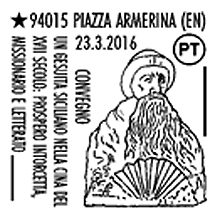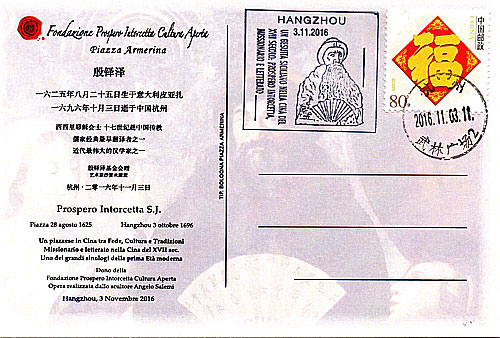In the Biographical Dictionary of Chinese Christianity, Jean-Paul West tells us that, born in Sicily, Intorcetta entered the Jesuit Order in 1642 and accompanied Martino Martini to China in 1657. He spent his first five years of active ministry in Chiench'ang (present-day Nanfeng) in the province of Kiangsi (Jiangxi). There he demonstrated the qualities of leadership and judicious temperament that characterized his 37-year apostolate in China. In 1665, following a nationwide anti-Christian resurgence, he was arrested and exiled to Canton with twenty-five other missionaries. Four years later, he was recalled to Rome as procurator and did not return to China until 1676. He was then assigned to Hangchow (Hangzhou) in the province of Chekiang (Zhejiang), where he remained stationed until his death. From 1676 to 1684 he also served as Jesuit visitor of China and Japan, and from 1686 to 1689 as vice-provincial of the Jesuits in China.
Intorcetta was a pioneer in developing a technique for producing Sino-European xylographic works (wood block printing) in which both Chinese and Latin characters appeared on the same page. A prolific writer and editor, he published Latin translations of the Chinese classics, Chinese translations of The Rules of the Society of Jesus and The Exercises of Saint Ignatius, and countless other Christian works. He also authored a long treatise in Latin defending the Jesuit position on the Chinese Rites honoring ancestors and Confucius.
While in Hangchow, Intorcetta revived the Jesuit attempt to develop an indigenous Chinese clergy by establishing a seminary. He also had the interior of the Church of the Savior decorated with seventy-two paintings that were used to teach Christian doctrine. Illiterate Chinese could relate to the religious images, while the literati were drawn to the classical Chinese texts and the skillful calligraphy that accompanied them.

